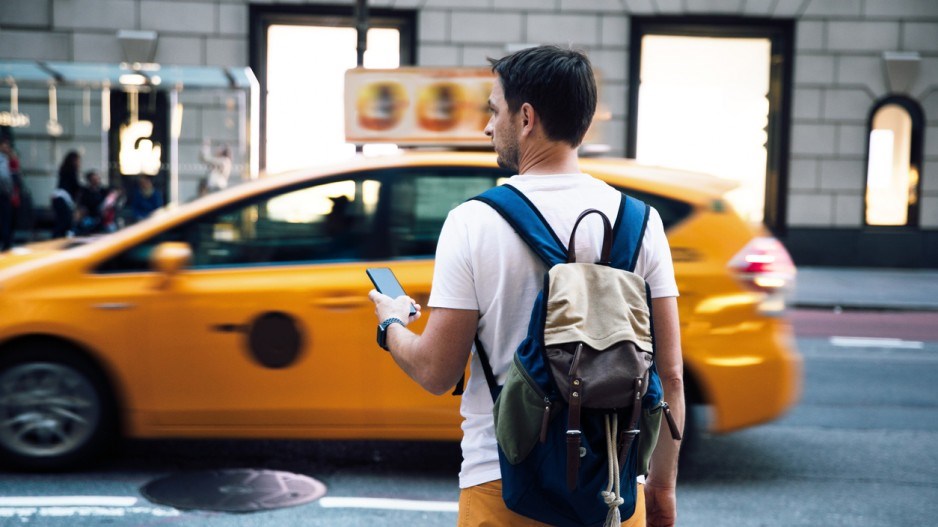It was only three and a half years ago that the issue of ride-hailing took plenty of airtime and ink as British Columbians pondered their vote in the provincial election that ended in a tie in the popular vote.
Since then, we have had what at times appeared to be endless bickering, and even Surrey Mayor Doug McCallum briefly overstepping the boundaries of his office to suggest that he was in a position to refuse business licences.
Ride-hailing services were not ready, as many had hoped, to provide a safe way home to British Columbians partying during last year’s holiday season. In 2020, it might be COVID-19 that keeps us away from relying on a smartphone app that can find us a vehicle in little time. There may be few places to go to, if the current recommendations to keep family circles small persist until Christmas.
Ride-hailing companies have been operating in British Columbia for about eight months. There were few mentions about this particular topic when the province’s voters pondered who to support in this year’s democratic process. The arrival of ride-hailing coincided with the most difficult part of the pandemic – lockdowns that greatly reduced our work and leisure activities.
Our economy is now more open than months ago, and some British Columbians are heading to their usual workplaces. We have spotted more ride-hailing vehicles on the road in specific cities. The pandemic has also afforded us to postpone, if only for a few months, any debates about issuing different permits for these vehicles to operate at or near Vancouver International Airport (YVR).
When Research Co. and Glacier Media asked British Columbians about ride-hailing late last month, the public was decidedly on board. More than seven in ten residents (72% support allowing ride-hailing services to operate in the province, while only 20% are opposed.
As expected, British Columbians aged 18 to 34 – a generation that has matured along with smartphone technology – have a higher level of support for ride-hailing (78%) than their counterparts aged 35 to 54 (74%) and aged 55 and over (65%). Satisfaction with this new transportation option is high across all regions, as well as among supporters of the three major provincial parties.
At this stage, only 15% of British Columbians have used a ride-hailing service in British Columbia. The proportion of seemingly early adopters is higher among men (18%) and residents aged 18 to 34 (26%). On a regional basis, Metro Vancouver leads with 19%, followed closely by Northern BC at 17%.
While only 12% of BC New Democratic Party (NDP) voters in the most recent election have actually ride-hailed in the province, the proportion rises to 18% among BC Liberal voters and 20% among BC Green voters. This is not a surprise, as the BC Liberals and the BC Greens were the primary proponents of ride-hailing legislation in past legislatures.
British Columbians who have used a ride-hailing service are particularly happy with specific aspects of their experience. At least half claim that ride-hailing is superior to taxis in four aspects: overall cost (55%), payment options (also 55%), how long they waited for a vehicle to pick them up (50%) and the cleanliness of the vehicle they boarded (also 50%).
There are other issues where ride-hailing operators are not ranked as highly. Just over two in five users (44%) feel these services are better than taxis on accountability, and similar proportions issued comparable marks on transparency (41%) and the safety of passengers (39%).
There is no turning back to the presence of ride-hailing operators in the province. While the numbers on usage appear low – an indubitable side-effect of the COVID-19 pandemic – the early reviews on issues such as price and payment options are positive.
Still, there are some red flags that will have to be addressed by the nascent industry. We found that 14% of ride-hailing users thought the services were “worse than taxis” when it came to wait times. This may be a function of a specific moment of desperation in which a vehicle was temporarily elusive. However, in a connected world that demands immediate satisfaction and makes complaining easier than ever before, this is precisely the type of experience that can lead a user to delete an app and look elsewhere.
Mario Canseco is president of Research Co.
Results are based on an online study conducted from October 29 to October 31, 2020, among 800 adults in British Columbia. The data has been statistically weighted according to Canadian census figures for age, gender and region in British Columbia. The margin of error, which measures sample variability, is plus or minus 3.5 percentage points, 19 times out of 20.




